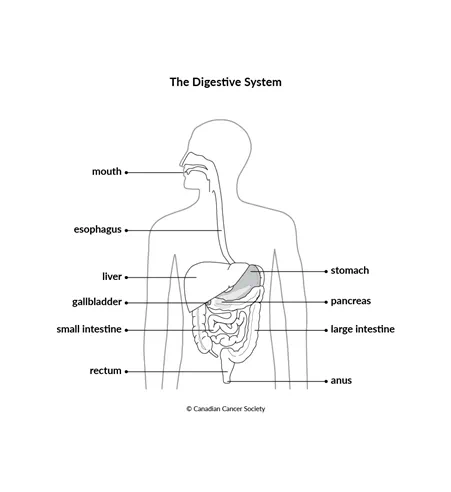The anus
The anus is part of the

Structure
The area around the anus, inside and outside the body, is called the anal region. It is made up of the anal canal and the perianal skin.
Anal canal
The anal canal is a tube about 4 cm long. It connects the anus to the rectum, which is where the waste from digestion (poop) is stored until it passes out of the body through the anus. The junction between the rectum and anal canal is called the anorectal line.
Ring-like muscles called the anal sphincter keep the anus closed. The anal sphincter is made up of the internal anal sphincter and the external anal sphincter. These muscles stay tight to keep poop in the rectum, and relax to let it pass out of the body.
The anal canal is lined by a mucous membrane, which is a thin layer of moist tissue. It contains gland cells that make mucus (a thick, slippery fluid). This mucus helps the poop move easily out of the body.
The upper part of the anal canal contains folds of

Perianal skin
The perianal skin is the skin around the anus. The perianal skin is made up of squamous cells and is similar to skin found anywhere else on the body.
Function
The anus is the end of the gastrointestinal tract. Your body feels the urge to have a bowel movement when nerves in the muscles of the rectum and the anus signal that the rectum is full. The muscles of the internal anal sphincter relax and the poop moves from the rectum into the anal canal. Once the external anal sphincter relaxes, the poop leaves the body through the anus.
Your trusted source for accurate cancer information
With support from readers like you, we can continue to provide the highest quality cancer information for over 100 types of cancer.
We’re here to ensure easy access to accurate cancer information for you and the millions of people who visit this website every year. But we can’t do it alone.
Every donation helps fund reliable cancer information, compassionate support services and the most promising research. Please give today because every contribution counts. Thank you.
